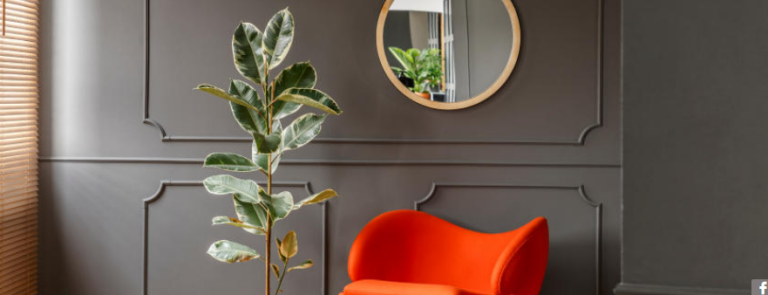How Light Affects Paint Color

When you start a painting project, selecting paint colors that go well together is a crucial part. However, it's not just about choosing colors; you also need to consider the type of paint and finish, as well as how the natural and artificial lighting in a room can impact the colors you've chosen.
Avoid the disappointment of finding out that the wall colors you picked don't match the paint samples you based your decision on. To make successful color choices, follow the tips below.
How Does Lighting Impact Paint Colors?
Imagine you've painted your walls, but the final result doesn't resemble the paint samples you used as a reference. In fact, the walls look different depending on the time of day. You're not alone in experiencing this situation. Many do-it-yourself painters have faced this issue, known as metamerism.
You may have encountered a similar effect when putting on socks. In LED light, it might appear that you're wearing two black socks, but in different lighting, such as natural light, one sock appears to be dark blue. This phenomenon can also occur with paint colors and should be taken into account when selecting them. Both the sample (in this case, the socks) and the source of illumination can influence how we perceive colors.


Get expert advice on paint and color selection from the knowledgeable staff at your local True Value store. They can assist you in choosing the right paint and offer insights on how light affects color perception in your home. To avoid disappointment with your color choice, consider picking up a Custom Mixed Color Sample and testing it on your walls. By trying out different colors in your space, you can make a more informed decision before committing to a final choice.
Natural Light
When it comes to natural light, it's important to take into account the direction and position of sunlight entering your room through the windows. If your room faces north, the light will be gentler, creating a warmer ambiance. Darker shades will appear even darker, while light colors will have a more subdued look due to a touch of blue in the north light. On the other hand, south-facing rooms receive intense light, which can brighten darker colors but may make light colors, especially white, appear washed out. Rooms on the west side of your home will have warm tones in the evening, particularly for orange, red, or yellow hues. Lastly, rooms with an eastern exposure will have a hint of green on the walls, and you can enhance this space with soft, cheerful yellows.


To accurately predict the impact of natural light on your painted walls' color, it's advisable to conduct a test within the room. Utilize True Value's Custom Mixed Color Samples to apply the potential paint colors on each wall. This way, you can observe how the colors appear on different walls, taking into account variations in sunlight exposure. By doing so, you'll gain a better understanding of how the colors interact within the room as a whole. After applying small patches of paint, assess the colors at various times throughout the day to gauge any changes caused by shifting lighting conditions. Depending on your desired outcome, you can make adjustments by opting for a slightly darker or lighter shade.
PRO TIP
Apply the tested paint on the walls during the morning and keep an eye on it throughout the day to observe how the color shades evolve.
Additionally, consider the time of day when the room is most frequently utilized. If your dining room is primarily used in the evenings, select the color shade that appears most appealing during that specific time.
Note: Depending on the season, the combination of artificial and natural light may also influence the appearance of colors in the evening.
Artificial Light
Before finalizing your paint colors, it's important to consider the impact of artificial light. In residential interiors, lighting is typically a blend of bulbs with varying warmth and brightness. The type of light used in a specific room can affect how the paint colors appear. To get an accurate sense of how your chosen colors will look, examine sample colors under the room's lighting conditions.
PRO TIP(S)
Furniture plays a crucial role. When evaluating light and color in an empty room, keep in mind that the objects present can influence how colors appear due to their varying abilities to absorb and reflect light.
Also, be mindful of the impact of accent lighting and task lighting, especially when used alongside other light sources.
It's worth noting that shadows can alter the appearance of paint colors compared to the areas directly illuminated. Dark colors might appear less vibrant in these regions, while lighter colors may seem slightly more radiant.



Paint Finish and Color
When selecting paint colors for your room, it's important to consider the type of finish that would work best. The finish you choose, such as flat, gloss, or semi-gloss, can influence how the color appears in different lighting conditions. Gloss finishes, in particular, can add depth to any color but can also be highly reflective, altering how the color is perceived. The shinier the finish, the more light will bounce off it and distort the color's appearance. On the other hand, flat finishes have less light reflection.
Additionally, specific colors themselves can be affected by lighting conditions. Whites and off-whites are versatile and tend to adapt well to different lighting. Pale shades of other colors also exhibit similar adaptability. However, light colors may sometimes reflect hues from surrounding objects like furniture, flooring, or rugs. Brighter and richer colors can pose challenges, with colors like khaki, sage, and taupe being particularly prone to changes under varying lighting conditions.
Now armed with a better understanding of how light can impact paint color choices, you can feel more confident when selecting colors for your home.
Source: mynicehome.gov.sg

